The next generation of Akai’s Ableton Live controller is a major overhaul of the APC40, with a new layout, touch strip controls and a standalone sequencer. Greg Scarth finds out more.
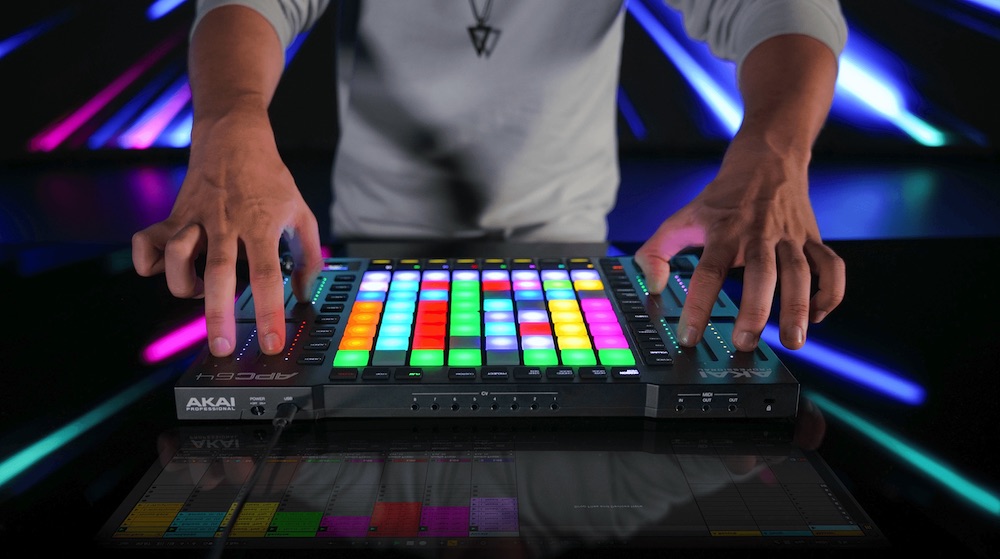
Akai were among the first hardware manufacturers to develop dedicated controllers for specific DAWs, kicking off with the original APC40 developed in conjunction with Ableton and released in 2009. The concept was logical, really: build the hardware with a specific software package in mind, and you can integrate the controller with the DAW much more effectively than a multi-purpose mappable controller. The APC40 was a very simple device by comparison with something like Ableton’s Push series, which has developed into something akin to a standalone hardware version of Live. Nonetheless, it became hugely popular as a controller for Live, with its combination of pads, faders and rotary controls giving access to a sizeable chunk of the software’s features.
The new Akai APC64 is the spiritual successor to the APC40 MKII, but also a step up in the range in a sense, despite coming in at a cheaper price. It’s a little confusing, and we wouldn’t be entirely surprised to see an APC40 MKIII at some point, for reasons we’ll explain later. In terms of its capabilities, however, the new model follows a slightly different philosophy and does much more than its predecessors. There’s a lot at stake here. Have Akai messed with a winning formula?
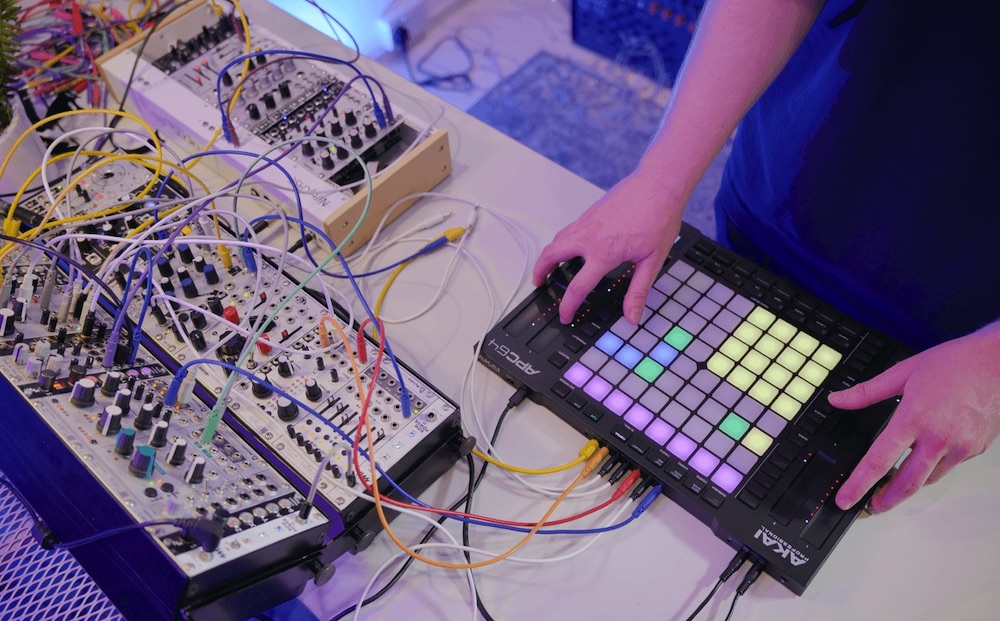
The APC64 is really a completely different beast to the APC40 on a number of levels, despite being roughly the same kind of size (37 x 27 x 3.5 cm). Most obviously, the 8×5 bank of rectangular pads is replaced by a Push-style 8×8 bank of square pads. Gone too are the faders and rotary controls, replaced in terms of functionality with eight ribbon-style touchstrips (not exactly the same when it comes to controlling devices and mixer features, but we’ll come to that).
However, the bigger changes to the APC formula are less immediately obvious. Start on the back panel, where the APC40 MKII featured nothing more than a USB port, Kensington lock slot, a power button and a foot switch input socket (which almost no one used). The APC64, by contrast, ditches the foot switch socket but adds eight channels of assignable CV/gate outputs plus MIDI in/out/thru over 1/8” sockets (with adapters to five-pin DIN sockets included). If that hints at the idea of using the APC64 as an interface to control hardware via Ableton, you’re correct, but only half way there; what’s even more powerful is the new option to use the APC as a standalone sequencer (or a sequencer running alongside Ableton), with up to eight tracks of 32-step patterns which can be routed out via the MIDI and CV/gate outputs.
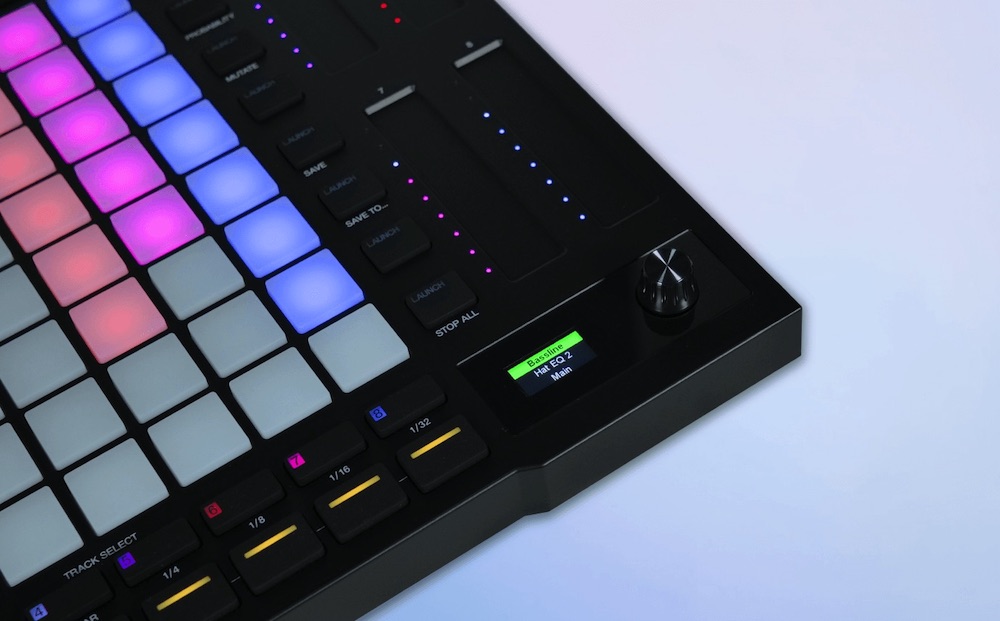
With all those new features taken in mind, setting up the APC64 is a simple matter of plugging it in and selecting it as a control surface in Ableton’s preferences. The APC64 includes Ableton Live Lite as well as a bundle of inMusic’s instrument and effect plugins, but we suspect most interest will come from existing Ableton users. Once you’re set up, the basics are intuitive in much the same way as you’d find with an APC40 even a Push; the 8×8 pad grid can be used for clip launching, triggering Drum Racks, step sequencing, or real-time playing with the option to select scales and chords. The larger pad layout instantly makes the APC64 feel like a much more capable control interface than the APC40, for obvious reasons. It’s a controller which encourages you to play instruments much more than the APC40, which leaned more towards clip launching. Despite that broader scope, things are still easy to use, with buttons along the top of the front panel to change the focus of the controls and a small but clear display in the bottom right corner giving good visual feedback on what you’re controlling.
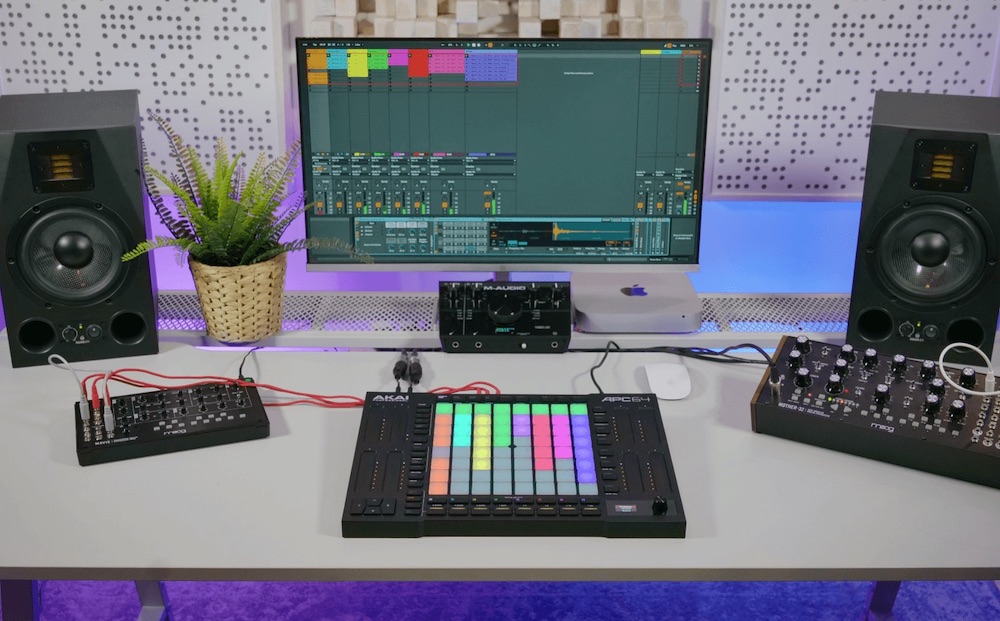
The next area in which the APC64 departs from the APC40 is the inclusion of a built-in sequencer. This works either alongside Ableton or as a standalone sequencer without any computer attached – that’s not to be underestimated in terms of the APC64’s versatility, allowing it to be used as the centrepiece of a live hardware setup or an iPad-based mobile setup. The sequencer itself is nice and simple to use but packs depth thanks to probability settings and the option to mutate patterns. Those patterns can be stored on the unit itself as well as sent to Live and converted into clips. The inclusion of CV/gate outputs on the unit is a fantastic touch for anyone who uses analogue synths or Eurorack modules, allowing the APC64 and Live to play nicely alongside CV-controlled hardware with minimal effort. There’s also plenty of scope for using the sequencer as a modulation source, assigning tracks to CV outputs and launching patterns to generate modulation signals.
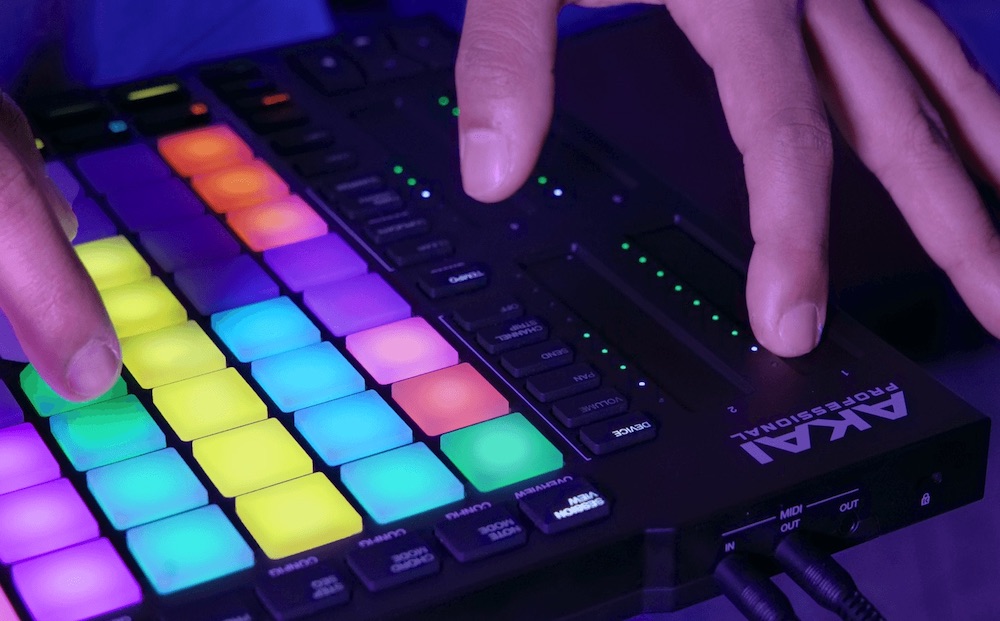
The physical layout of the APC64 also diverges substantially from the APC40, most obviously with the move from knobs and faders to assignable touch strips. These are laid out either side of the pad grid, which initially feels like a strange choice when a horizontal strip would more logically reflect a bank of eight channel faders. However, the logic becomes clear when you start using them; having strips on both sides means you can use both hands, with a central focus on the pad matrix. The touch strips themselves feel responsive and precise, working just as well for mixer controls and real-time modulation as they do for controlling device parameters or, indeed, anything you choose to assign them to. Of course, assignable controls can be a blessing and a curse when it comes to setting up a device. Thankfully, Akai’s APC64 Project Editor for Mac and Windows makes it easy to create your own custom layouts.
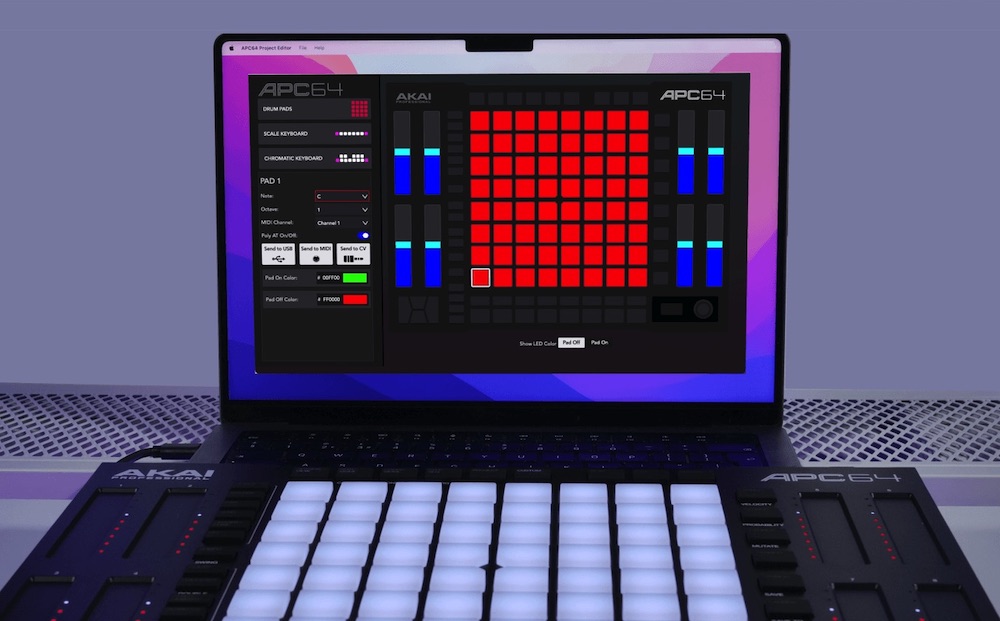
The APC64 feels quite different in practice to the APC40s which preceded it. The emphasis is very much on sequencing and programming with this unit, rather than the more open-ended device control of the APC40. You can assign the touch strips to control devices or access mixer features, but it doesn’t quite feel the same as the more mixer-inspired layout of the APC40. That’s a calculated decision on Akai’s part rather than an oversight, but it does mean that the APC64 almost certainly won’t work as well for certain approaches, most notably DJing (the lack of crossfader alone is a big hindrance in that case). You could pair the APC64 with other MIDI controllers to replicate some of those functions, but it feels like a bit of a compromise. It wouldn’t surprise is to see a cheaper APC40 MKIII arrive at some point, designed to tap into the more specialist approaches which the MKII covered so well. However, it is worth reiterating that the feature set of the APC64 lends itself well to the kind of production workflows which at least 99% of Ableton Live users tend to employ. Those niche use cases – DJing and specific types of live performance – aren’t covered quite so well, but the APC64 will be a much better choice for most people. That’s all the more impressive considering that its £329 price point is actually cheaper than the £338 RRP of the APC40 MKII.
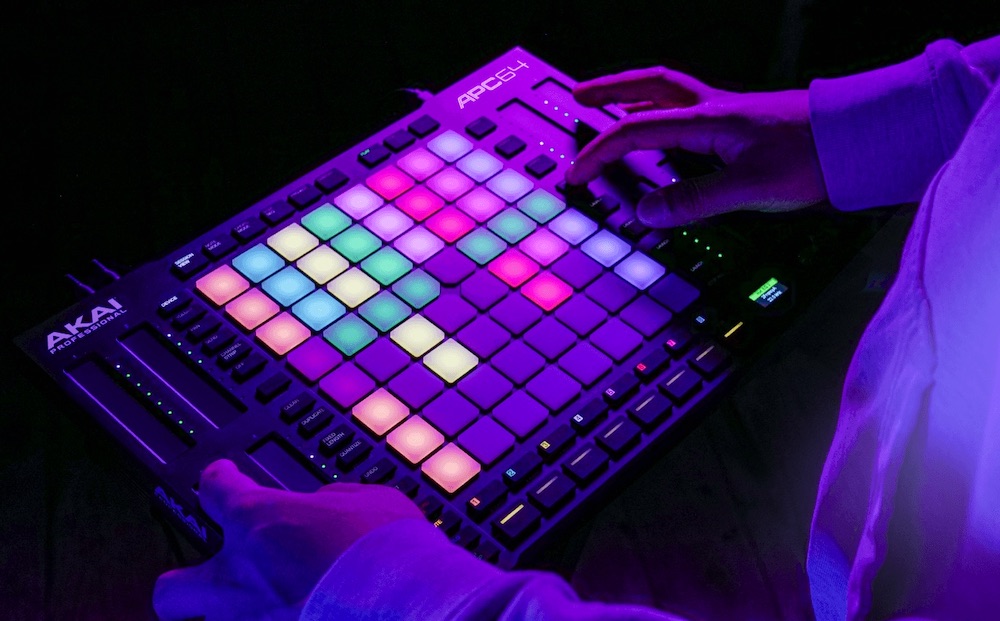
The APC64 marks the biggest overhaul of the APC concept since the release of the original APC40 some 14 years ago. There will be a small minority of Ableton Live users who don’t appreciate the move away from physical faders and rotary controls, no doubt, but the APC64 recognises Akai moving with the times and reflecting the way more and more people make music. By streamlining and integrating the processes of controlling Ableton, sequencing outside the box and triggering hardware, the APC64 offers a refreshing new approach to the Ableton Live workflow. What’s more, its standalone features make it an interesting alternative to something like an Arturia BeatStep Pro as a sequencing hub for a hardware setup. More integrated than a Launchpad Pro MK3 and way cheaper than an Ableton Push, the APC64 feels like a bit of a bargain, acting as a hands-on central controller and interface between software and hardware.
Greg Scarth
More info/buy